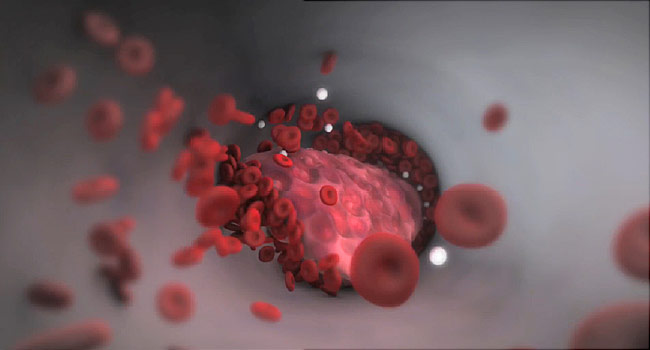What Is PE (Pulmonary Embolism)?

Each year, more than 600,000 people in the U.S., experience a pulmonary embolism (PE). With these high population numbers, a PE is considered a common disease. Pulmonary embolism is also the third biggest cause of heart attacks and strokes.
The system of PE disease starts with our arteries. Arteries carry blood away from the heart. A pulmonary artery takes blood for the heart and carries to the lungs. There are two pulmonary arteries, a left one and a right one. They both carry blood to the left lung and the right lung, respectively.
A pulmonary embolism is a blood clot in one of the arteries of the lungs. Blood clots typically originate in the deep veins of the legs and then may travel to the lungs. These clots are known as deep vein thrombosis (DVT).
Causes of PE
The more common reasons why blood clots form in the leg and travel to the lung is caused by the following:
- peripheral arterial disease
- vascular trauma
- medication side effects
- post-surgery complications
- immobility for long periods of time
- changes during pregnancy
PE Symptoms
The symptoms of a PE include the following:
- Shortness of breath
- Chest pain
- Persistent coughing in which there may be blood in the phlegm
- Leg pain and/or swelling
- Fever with excessive sweating
- Rapid or irregular heartbeat
- Lightheadedness or dizziness
- Blue tint to nails and lips
Treatments
PE is a life-threatening situation. There are several PE treatments to keep you alive and healthy.
1. Prescription drugs: the doctor may prescribe medicine for a pulmonary embolism involving anticoagulants or blood thinners. Thrombolytic drugs help to dissolve clots and are most effective in emergencies.
2. Surgery: Surgeries to keep blood clots from traveling to the lungs is rare. A surgical procedure is only used if the blood clot is large and menacing. But if needed, there are two options. One PE treatment features a surgeon inserting a thin wire with a small filter into the leg.
This procedure is called a “vena cava” procedure. The wire lead and filter are fed up to the heart in the blockage area in order to keep the blood clots from traveling to the lungs. Another procedure calls for a catheter that will remove large clots from the artery area. Surgery is a last-ditch effort.
3. Compression stockings: Compression stockings are specialized support hose options for treating PE. They are prescribed by a physician to compress the legs to prevent the cessation or blockage of the blood flow. The stockings create deliberate pressure on the muscles of the blocked areas like the legs.
The purpose is to force the coagulation of blood out of the veins in the legs and back to the heart while also improving the vein circulation in the legs. A doctor may prescribe gradient compression stockings which means that the number of pressure changes.
The stockings deliver controlled pressure starting at the ankle and the pressure decreases to the top of the stockings that only go as high as the knee. The pressure changes promote better circulation for the reduction of swelling and the relief of tired, achy legs.
Akshay Sharma
Latest posts by Akshay Sharma (see all)
- YOUR NEXT VIRAL BOHO LOOK STARTS WITH GREEN KYANITE RINGS - July 2, 2025
- How to Apply for Partner Visa 801: Full Guide for 2025 - June 26, 2025
- How much water should a nephrologist drink? - June 20, 2025
- Fuel Efficiency Tips for Your Mahindra Bolero – Maximize Your Mileage - June 4, 2025
- How AC Coil Cleaning Prolongs the Life of Your System - May 28, 2025
- Important Factors that Determine Cost of Home Window Repair Service
- An Overview About Ketomac Shampoo in India
